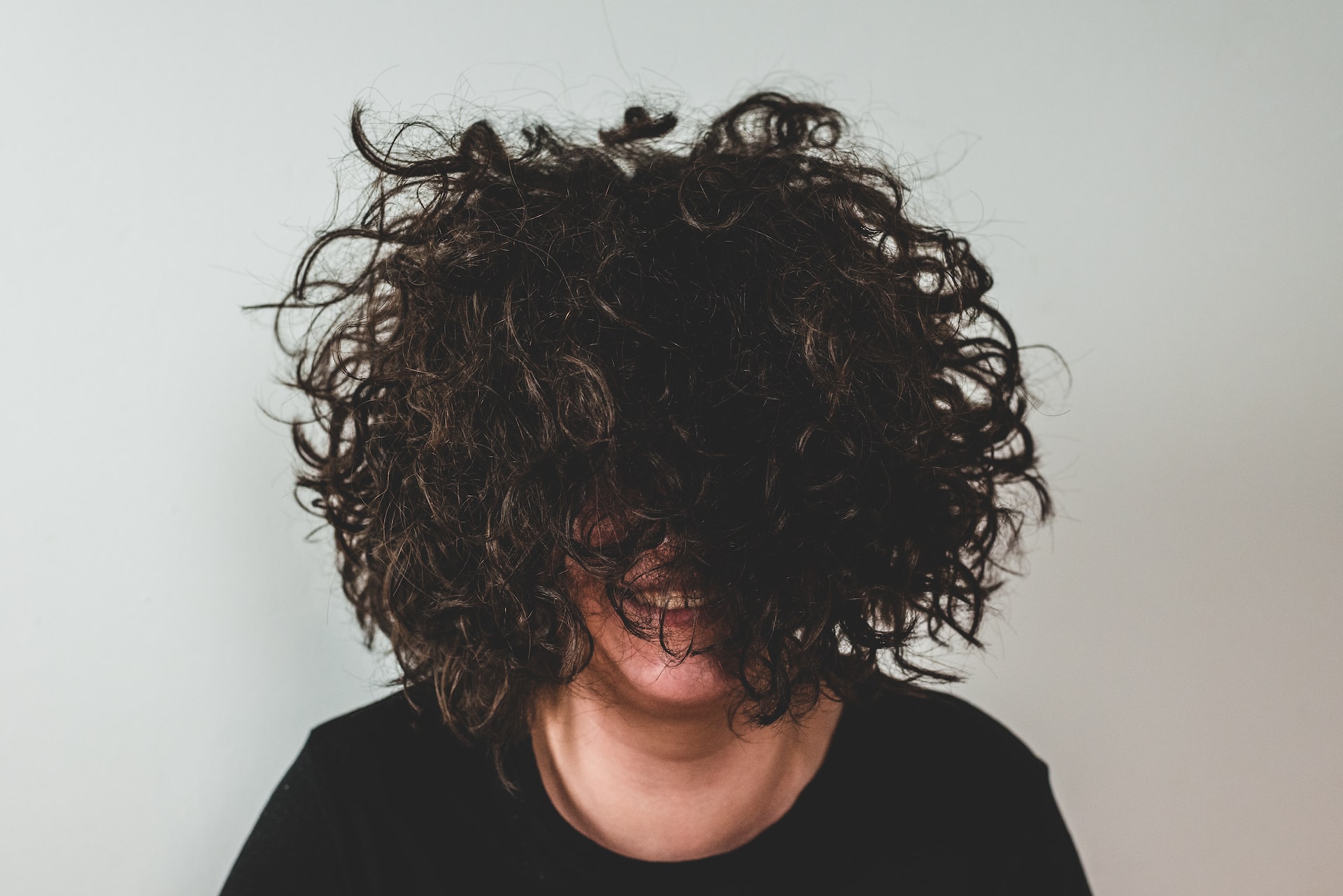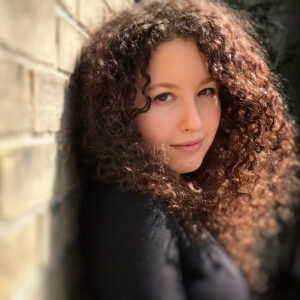I remember going to the washroom halfway through a burning hot day of elementary school. I glanced in the mirror, disappointed to see my hair had once again expanded to twice its size. At that moment, I felt envious of those who could wake up with effortlessly straight hair. I am grateful to now love my curls and know precisely how to manage them. However, it wasn’t long ago when I would have done just about anything to have sleek, straight tresses. I was hooked on flat ironing and Keratin treatments. Every morning, I went over each curl excessively with 300- degree Fahrenheit heat and lost a good five inches of my hair due to heat damage.
It wasn’t just manageability that drove me to straighten my curls, but desire to fit into Western beauty standards. While a great chunk of the Jewish community does not have curly hair, it is still a trait that society often equates with Jewish identity. When I share my cultural background with people, they often exclaim, “So that’s where the curly hair comes from!” As a teen, this confused me, as I mainly saw Jewish people with straight hair. Then I realized a lot of us don’t flaunt the au-natural look.
The Controversial History of “Jewish Hair”
In their article, “Wearing your natural curls is an act of Jewish resistance,” Rachel Jacoby Rosenfield and Maital Friedman discuss how antisemites have used Jewish physical features to further propel antisemitism through stereotypes. Dark, curly hair is a key trait used to describe what Jacoby Rosenfield and Friedman characterize as the “Jewish demonic character.” Curly hair is beautiful, but for centuries has been used against us through labeling and identification. Even in Jewish spaces, Jacoby Rosenfield and Friedman share how they were encouraged to use a flat iron, highlighting an internalized antisemitism and insecurity even within the community when wearing natural hair.
Among the Black community, Chanté Griffin writes on how wearing natural hair has become a legal issue. Griffin discusses a specific case where in 2010, Chastity Jones received a conditional offer for a job: Jones was given an agreement saying she needed to cut off her locs, a traditional Black hairstyle. In a study looking at body and beauty image issues surrounding college age Black women, hair was noted as a major concern. Due to white, Western beauty standards, and discrimination within professional and educational settings, the encouragement of attaining a certain Westernized look is a pressure many face at hefty prices. It is clear hair bias is something that exists among racialized and ethnic groups on a day-to-day basis.
Alison Kirk, 20, a Brandeis University student, used to straighten her hair all the time. “I almost got upset when people would say, well you don’t look Jewish; I can’t recognize any stereotypical Jewish features.”
It’s not uncommon for Jews to be told, “You don’t look Jewish,” as a backhanded compliment. Why is it that looking Jewish is seen as unfavorable? And why do so many people have a built-in belief of how Jews look, despite the vast diversity of diaspora?
Nazi Eugenics
Hannah Dylan Pasternak, Associate Director of Special Projects at SELF magazine, explains how straightening hair isn’t exclusively about assimilation.“It’s not necessarily about leaving your Judaism behind,” said Pasternak, who emphasized how passed-down “heteronormative aesthetic ideals” influence how not only white Jews but also people of color and Black individuals might treat their hair. “We all kind of have these inherited, almost subconscious, super embedded notions of what is the best way to be, the best way to act, and the best way to look. I think there is a history to it whether it’s conscious or not.”
That history is well-documented. In Nazi Germany, specific instruments were used to measure skin, eye, and hair colour to “determine Jewishness.” This philosophy is known as Eugenics, a white supremacist pseudoscience created with the aim of cultivating a “pure” society through ostracization of minorities and racialized groups. Some rituals include forced sterilization to “ensure” the purity of the dominant race and prevent “degenerates” from reproducing. In Nazi Germany, eugenics abetted the mass genocide of the Jewish people. Given that curly hair was used as a eugenics metric to identify and harm Jews, perhaps, the impulse to straighten the curl could be seen as a manifestation of intergenerational trauma.
Rhinoplasties Versus Keratin Treatments
Hair straightening is only one of a number of body modifications common among Jewish women grappling with questions of body image. At surface level, modifications like Keratin treatments can be done for hair manageability, while potentially emerging from a subtler desire to conform to white, Westernized beauty standards. The same can be said of rhinoplasties. Both have been used as a way to identify and label Jewishness, and often to stereotype or discriminate against Jews.
For centuries there have been stereotypes surrounding “Jewish noses” in relation to “Jewish hair.” In fact, in Western scientific literature influenced by eugenics, “Jewish nose” is language used by surgeons to characterize physical specific imperfections in relation to race, viewing them as a deformity. Some physicians felt that the altering of the “Jewish nose” could even lead to “patient wellbeing”.
“My mother actually got a rhinoplasty in high school by the recommendation of her mother, so it is very generational in that way,” said Kirk, whose sister also received a Keratin treatment. “I think it just relates to not seeing those features heavily represented and celebrated, so there is this heavy pressure to conform. I think a lot of it is also generational reinforcement of assimilation.”
The Male Gaze
In an article on Naturally Curly, Teri Evans shared an experiment she conducted. She had a dating profile with curly hair, and a profile with straight hair. Teri’s flat iron profile got 181 messages compared to her curly hair profile, which got 60. The straight hair profile received 120 “winks”, whereas the curly one only got 60.
I found myself relating to Evans’s experience. As a Bumble user, I recently received a notification suggesting I use my “best picture” as the first one users can see. The photo the app suggested was the only one I had with straight hair.
I decided to test this theory out as well, but this time in person. I went to a bar one night with curly hair and the next with straight. When I wore my hair curly, I received more questions asking “where I was from.” In the case of straight hair, no one ever asks what my cultural background is. My curly hair seems to be an opening line for potential suitors; however, it was clear that it made me seem ethnically ambiguous, and invited what some might consider inappropriate, racialized inquiries.
For Black and other people of color, this line of inappropriate questions about origin may be a daily occurrence, regardless of straightening their hair. To be able to straighten one’s hair in order to avoid these interactions is certainly a form of white privilege.
Online, many matches start an opening line with something to do with my hair, including “Can I bury my head in those curls?” I find that the individuals who swipe right or approach me in person seem to be solely drawn to my hair, whereas when I wear it straight, my hair is not a factor taken into consideration. This messaging is implicit and has been ingrained in our minds early on that our dating interests seem to prefer straight hair.
Personal Perspectives, Different Generations
“I can say that there’s some Middle-Eastern countries that unless your hair is smooth, it’s unkempt and not accepted. And then the other side is manageability” said Adina Sherman, curl expert and owner of Curly Girls Studio. As Sherman explained, part of the preference for straightening hair is that it’s a more “predictable style, and curly is not predictable.”
“Even when you go back decades, the thing with doing hair is that it has always been treated like it’s straight,” pointed out Sherman, and is in a sense, “teaching you to look like something you’re not.” This relates to the history of most barber and salon schools which geared their education toward working primarily with straight hair.
Diane Litchen, 76, Real Estate Agent, has amazing curly hair. However, embracing the natural look was a challenging task. “My hair was the bane of my life! All I wanted was a center part with straight hair. That’s what I wanted more than life!” Litchen described caring for her curly hair as “terrible.”
“I knew girls at camp who ironed their hair literally with an iron board. There were also girls who took frozen cans of orange juice on top of their heads as a roller,” Litchen said.
While training in cutting curls within the U.S. is still in short supply, there was an even greater scarcity of curl education among stylists in the 1960s, when Litchen was coming of age. “It’s only as an adult woman, that I embrace my curly hair, that I like my curly hair, and feel attractive in my curly hair,” she said.
For Hanna Rosenfeld, 23, a recent Laurier University graduate, her need to straighten her hair everyday was internalized and subconscious, “which is also terrifying,” she said. Rosenfeld was in an environment that didn’t have many Jewish students, increasing how pervasive these beauty norms could be. “I think it comes back to wanting to fit in and be accepted,” she said. “Growing up, I never felt Jewish enough for the Jewish kids but too Jewish and different for my non-Jewish classmates,” Rosenfeld reflected. “It felt a lot easier to distance myself out of fear of rejection.”
Alison Kirk intertwined curly hair with “embracing true identity” which she felt as very connected to her queerness. “Just in the sense that I am non-binary, I’m also queer, sometimes lesbian identifying. I think part of the straightening hair thing for me was wanting to conform to what a lot of my peers looked like. And that also included the way I dressed and the way I presented myself.”
Kirk gave some advice: “If you feel connected to the idea of curly hair or whatever that means in terms of your natural hair and you feel inspired by those around you, you should try it,” she said. “At least for me, I know it was very empowering, and it did help me embrace the control I had over my own image and how I wanted to present myself. It also helped me embrace other parts of my body that I’m not particularly fond of whether that’s related to Judaism, body shaming, or body dysmorphia.”
Ultimately, the journey to embracing curls is not an easy one. I have family members who still wear their hair straight, and I have never actually seen it curly. Others disposed of their flat irons years ago, and some of us enjoy a hybrid look, some days straight, other days curly, with all sorts of funky and fun styles. What it all comes down to is manageability, self-acceptance in an antisemitic culture, and what makes someone feel good. Curly hair is not easy to care for, and it is a process of trial and error that needs to be embraced and most importantly, loved within ourselves.

